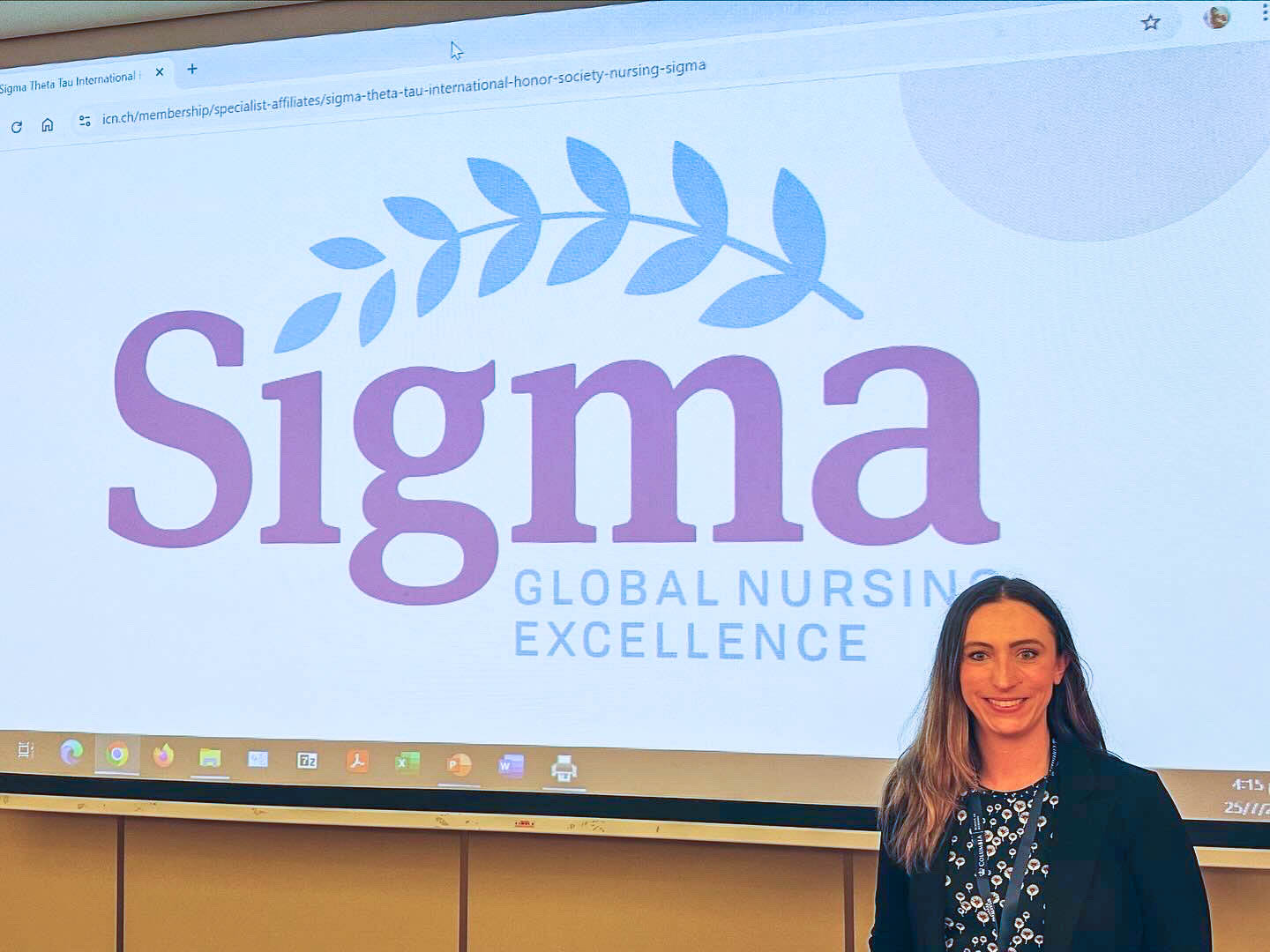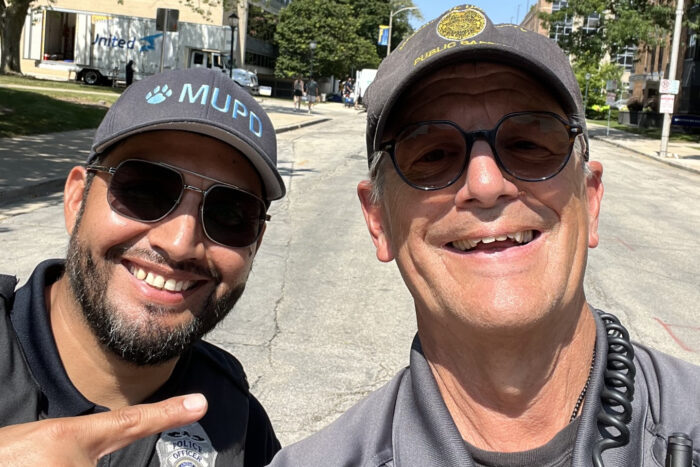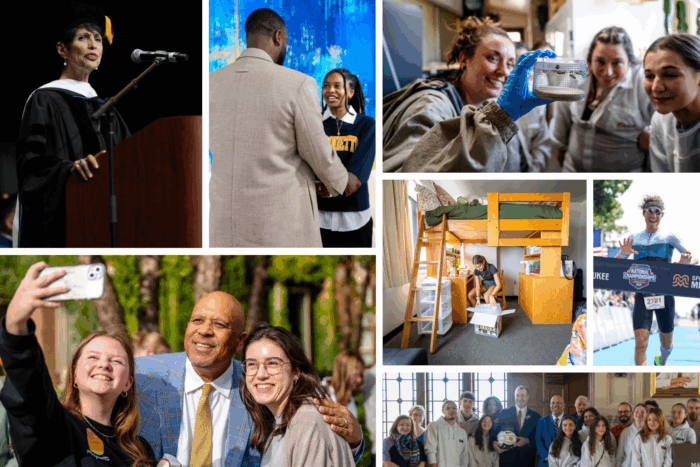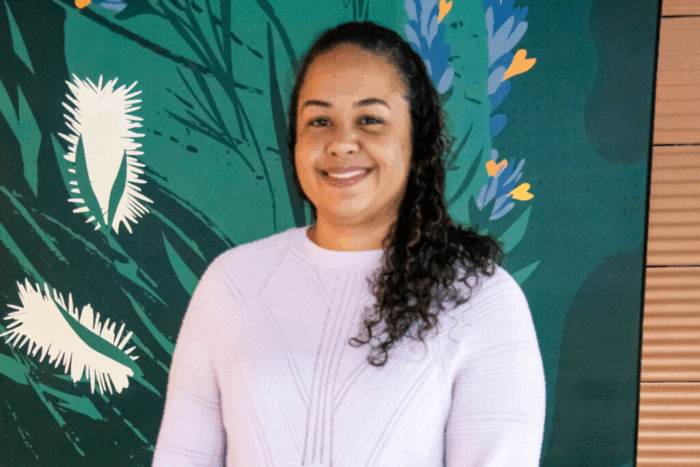When Assistant Professor Dr. Jessica Zemlak thinks about the most memorable moment from her time at the Sigma International Nursing Research Congress in Singapore, she stresses the importance of learning about the contributions from nurse scientists around the world and the collaborative relationships that can form from bringing researchers together in a shared space.
For example, Zemlak fondly remembered sharing a meal with a Thai researcher with a similar research program focused on women’s health. Conversation and connections like this are important beginnings to potential research collaborations.
“Those interactions that are not so structured, that are more informal; those are really critical to building collaborations necessary to move the science forward,” Zemlak says.
Zemlak attended the Sigma Conference alongside Assistant Professor Dr. Jackie Christianson. Together, they presented their findings on topics ranging from the reproductive health of women recovering from opioid use disorder to the causes of nursing faculty shortages. The two professors went as learners as much as a teachers, observing emerging research topics and methods from more than 800 nurse researchers, students, clinicians and leaders around the world.
“I’ve found the most benefit in the parts of the conference where you chat with someone in the hallway about what they’re presenting, or when someone stays after your presentation and comes to talk to you about your work,” Christianson says.
Bringing a global perspective to public health has always been important for Zemlak, who spent time as a nurse practitioner with the U.S. Department of State posted in Nigeria and accompanies students on the annual Winter Break trip to South Africa. She believes it is important to embrace new perspectives by exposing oneself to other cultures when the opportunity arises.
“As a scholar who focuses on public health issues, I think it’s incredibly important to be mindful of the science that’s happening in other places so we don’t become siloed in the way we approach our research processes or the way we think about health,” Zemlak says.
“Presenting at an international conference brings a whole world full of people from different cultures to respond to your work,” Christianson says. “My research centers around well-being in healthcare workplaces, but the concept of what a healthy workplace looks like or what rewards one ought to get from their work is influenced by one’s cultural understanding of what work is.”
Conference attendees were challenged to think about how their work fits into the United Nations’ Sustainable Development Goals, which were released in 2015 as a roadmap for a healthier, more prosperous world by 2030. Sustainable Development Goal 3 is the one that deals with health; it lays out ambitious goals such as achieving universal health coverage and reducing the global maternal mortality ratio to fewer than 70 per 100,000 live births.
Even though the researchers at the Sigma Conference came from different countries, spoke different languages and had very different areas of interest, they shared a commitment to these goals.
“These goals feature prominently in the way that researchers in other countries talk about their work,” Zemlak says. “For myself and for many of the U.S.-based researchers who are all working toward these goals, they may feature less prominently in our projects. Going to a conference like this is a nice reminder to keep the goals front and center.”
As she presented her work to the multinational crowds, Christianson and Zemlak had to be mindful of how public health abroad differed from her own American point of reference. For instance, Zemlak’s presentation about reproductive health among recovering opioid use disorder came with the context that America has much higher rates of opioid use disorder and overdose deaths than peer countries.
Conversations with fellow researchers, however, revealed surprising similarities across borders, as nurse researchers from other countries told stories of health inequities that reminded both professors of the challenges that awaited at home.
Ultimately, there was more that united the people in attendance at Sigma than separated them.
“That is truly my favorite part of this conference; that you can sit down at a table and be with people from anywhere, yet we are all in agreement about our core values as nurses,” Zemlak says. “The openness, the willingness to connect and build international relationships for future research, this is something truly unique about the Sigma Conference.”



